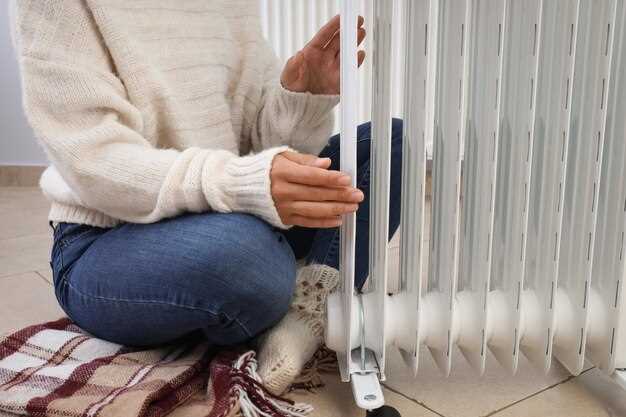
How to flush your radiator step-by-step
- Dominique Kaye
- 0
- Posted on

Keeping your vehicle’s radiator in optimal condition is essential for ensuring the engine runs efficiently and stays cool. Over time, internal deposits, rust, and contaminants can accumulate in the system, leading to reduced performance and even potential overheating. Therefore, regularly flushing your radiator is a necessary maintenance task for every car owner.
This guide will walk you through the process of flushing your radiator step by step, ensuring that you understand each part of the procedure. By following these directions carefully, you can help extend the lifespan of your vehicle’s cooling system and promote better engine performance. Remember, a well-maintained radiator not only safeguards your engine but also improves fuel efficiency, making it a worthy investment of your time.
In the following sections, we’ll cover the tools you need, the preparation required, and the exact steps to perform a thorough flush. Whether you’re a seasoned mechanic or a first-time DIY enthusiast, our straightforward approach will help you achieve effective results with confidence.
Gather Necessary Tools and Coolant for a Radiator Flush

Before you begin the process of flushing your radiator, it is essential to collect all the necessary tools and coolant. Having everything ready will make the task more efficient and straightforward.
Tools Required:
To effectively flush your radiator, you will need:
- Wrench or socket set – for removing the radiator drain plug and any hoses if necessary.
- Screwdriver – to assist in loosening clamps or accessing certain components.
- Hose – a garden hose (preferably with a nozzle) will help direct water into the radiator for flushing.
- Container – a large bucket or pan is essential for catching old coolant and debris while you flush the system.
- Funnel – for easy pouring of new coolant back into the system after the flush.
- Gloves – rubber gloves can protect your hands from old coolant and dirt.
Coolant Selection:
Choosing the right coolant is crucial for your vehicle’s performance. Make sure to:
- Select a coolant compatible with your engine type, typically listed in the owner’s manual.
- Consider whether to use concentrated coolant or pre-mixed solutions, based on your preference and environmental conditions.
- Ensure the coolant has the correct antifreeze properties to prevent freezing in colder climates.
By gathering these tools and selecting the appropriate coolant, you will be well-prepared to perform an efficient radiator flush, ensuring optimal engine cooling and longevity.
Step-by-Step Procedure for Flushing Your Radiator

Flushing your radiator is essential for maintaining optimal engine temperature and preventing overheating. Follow these steps to ensure a thorough flush.
Step 1: Gather Necessary Tools and Supplies
You will need gloves, a radiator flush solution, a large bucket, a garden hose, and a wrench. Ensure you have a funnel for easy pouring.
Step 2: Prepare the Vehicle
Park your car on a flat surface and turn off the engine. Allow it to cool completely to avoid burns from hot coolant. Engage the parking brake for safety.
Step 3: Locate the Radiator Drain Valve
Find the drain valve at the bottom of the radiator. Place the bucket underneath to catch the old coolant. Open the valve by turning it counterclockwise. Allow all fluid to drain before closing it.
Step 4: Add Radiator Flush Solution
Once drained, mix the radiator flush solution with water according to the instructions on the bottle. Use the funnel to pour the solution into the radiator through the filler cap.
Step 5: Run the Engine
Start the engine and let it run for about 10 to 15 minutes. This allows the flush solution to circulate through the system, breaking down deposits and buildup.
Step 6: Drain the Flush Solution
Turn off the engine and let it cool. Open the drain valve again, allowing the flush solution to drain completely into the bucket. Close the valve once finished.
Step 7: Rinse the Radiator
Use a garden hose to flush clean water through the radiator. Run the water until it flows out clear, ensuring all flush solution and debris are removed.
Step 8: Refill the Radiator
After rinsing, close the drain valve. Using the funnel, refill the radiator with the appropriate coolant mixture as specified in your vehicle’s manual.
Step 9: Check for Leaks
Start the engine and let it run while checking for leaks around the drain valve and hoses. Ensure the coolant circulates properly and that the temperature gauge remains stable.
Step 10: Dispose of Old Coolant Properly
Dispose of the old coolant and flush solution in accordance with local regulations. Do not pour it down the drain or onto the ground.
Following this step-by-step procedure will help maintain your radiator’s efficiency and prolong the life of your vehicle’s cooling system.
Disposal of Old Coolant and Final Checks After Flushing
After successfully flushing your radiator, it is crucial to properly dispose of the old coolant. Used coolant can be hazardous due to its toxic components, which can harm both the environment and your health. Follow these steps for safe disposal:
- Check Local Regulations: Before disposing of coolant, consult your local waste management guidelines. Some areas have specific rules regarding the disposal of hazardous fluids.
- Use a Sealed Container: Pour the old coolant into a leak-proof container. Make sure it is clearly labeled as “used coolant” to prevent accidental exposure.
- Find a Recycling Center: Locate a recycling center or waste disposal facility that accepts automotive fluids. Many auto repair shops also offer coolant recycling services.
- Do Not Dump: Never pour old coolant down the drain, on the ground, or into any body of water. It is harmful to wildlife and water sources.
Once the old coolant has been properly disposed of, perform the following final checks:
- Inspect the Radiator: Ensure that there are no leaks or damages. Check the hoses and connections for wear and tear.
- Refill with Fresh Coolant: Fill the radiator with the appropriate type of coolant, adhering to your vehicle manufacturer’s recommendations. Avoid overfilling to prevent spills.
- Check for Air Pockets: Allow the engine to run and reach operating temperature. Monitor for any air pockets in the system and bleed them if necessary.
- Monitor Temperature: After flushing and refilling, keep an eye on the engine temperature gauge. Ensure the radiator is functioning effectively and the temperature remains stable.
- Clean Up: Wipe any spills using a rag and safely store or dispose of all materials used during the flushing process.
By properly disposing of old coolant and conducting thorough final checks, you can ensure the longevity and efficiency of your radiator, while also protecting the environment.
